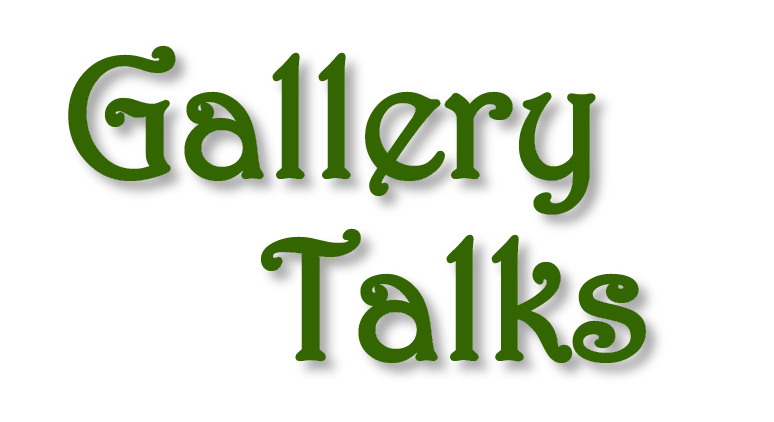The Courtauld Gallery collection starts with the 14th century and continues until the 20th century and talks are given in chronological order, so as to give an idea of the development in art over the centuries.
| CG01 | Medieval & Early Renaissance 14th & 15th Centuries Monaco, Fra Angelico, Botticelli, Bellini, Massys Read More » This period in Europe witnessed great artistic developments, many the result of interactions between Christianity and the cultural inheritance of Ancient Greece and Rome. Religion played a dominant role in the lives of most Europeans and the established Catholic Church was of enormous significance. Practically all art produced during this time was made within a Christian context, often as an aid to worship, inspiring devotion and prayer. Fine examples of both private and public altarpieces in the Courtauld collection include works by Florentine Renaissance masters Monaco, Fra Angelico and Botticelli and the Netherlandish Campin. Works of art were also valued for their beauty and for the skill of their creators, such as those by the Antwerp painter Massys and artists, for example Daddi, began to sign their works. |
| CG02 | Northern Renaissance, Baroque & Rococo 16th - 18th Centuries Cranach, Rubens, Goya, Gainsborough Read More » The Protestant Reformation of 16th century Northern Europe resulted in a decline in church commissions and a rise in the demand for pleasurable paintings for private collectors, such as those painted in Germany by Cranach. The Counter Reformation during the 17th century witnessed the Catholic Church reasserting its power and presence, particularly through the prolific building of churches elaborately decorated with altarpieces by, for example, Flemish artist Rubens, court painter to the Spanish Catholic rulers of the Netherlands and Cortona in Rome working for the Pope. Portraiture became increasingly popular during the 18th century and the most successful society portraitists in England were Reynolds and Gainsborough, whilst in Spain the remarkable Goya was employed as First Court Painter to the King. |
| CG03 | Impressionism 19th Century Monet, Manet, Renoir, Degas Read More » Late 19th century Paris was a vibrant city shaped by war and rapid expansion, during which exciting time a new, highly influential movement in painting arose. In 1874 a loose association of artists, including Monet, Pissarro, Degas and Renoir, banded together to show their work outside the official exhibition system. It was here that they shocked the art world with their style and subject matter and were dubbed as mere “Impressionists”. The name, coined in derision, stuck. Inspired by Manet’s paintings of ‘la vie moderne’, these artists painted everyday modern life and rejected religious, historical and academic subject matter. They aimed for truth to what they saw, to capture fleeting atmospheric effects and employed innovative techniques, painting outdoors in visible brushstrokes of bright unmixed colour. |
| CG04 |
Post-Impressionism 19th Century Cezanne, Van Gogh, Gauguin, Rousseau Read More » Following on from the innovations of Impressionism, the Post-Impressionists in France, the central figures being Van Gogh, Gauguin and Cézanne, freed colour and line from purely representational functions and concentrated on expressing emotional and symbolic values through their art. The way in which each of these artists rejected naturalism varied considerably: Cézanne searched for the geometry in nature and was concerned with pictorial structure, Gauguin explored the symbolic and decorative use of colour, often using colour in an unrealistic way, in order to express his inner vision rather than external reality and Van Gogh was fascinated by the expressive value of colour, using exaggerated colours to give meanings to objects and to express himself; he became the fountainhead of Expressionism. |
| CG05 |
Bloomsbury & Modernism 20th Century Grant, Bell, Fry, Hepworth, Auerbach, Kossoff Read More » The Bloomsbury Group were a loose assimilation of like-minded writers, artists and art lovers who cultivated free intellectual investigative discussion, questioned convention, challenged moral attitudes and encouraged an experimental approach to art, literature and lifestyle. Duncan Grant, Vanessa Bell and Roger Fry were among the most advanced early 20th century British artists responding to contemporary trends in French art. Modernism refers to a succession of diverse art movements which sought to align with the values of modern industrial and human life. Artists used new techniques, materials and imagery to create works of art that expressed the experience of modern society, often rejecting traditional values and experimenting with form and process. The variety of styles and approaches which make up modern art are reflective of the great changes and upheavals that characterise the twentieth century, from the early decades, through two world wars and into the 1960s and 1970s. |






